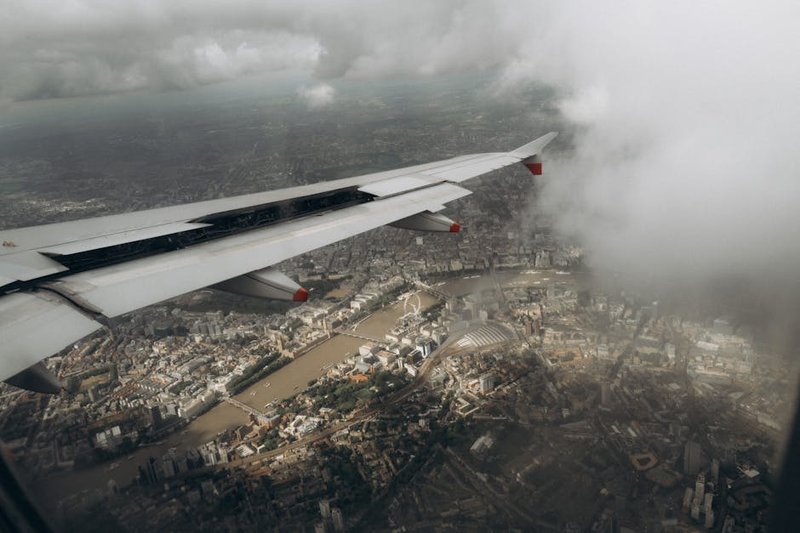The climate crisis demands that we interrogate every aspect of our global economic system, including the aviation industry which exemplifies the contradictions of capitalism in our quest for ecological sustainability. As a scholar who has long examined the intersections of social justice and environmental policy, I find it necessary to analyze the recent developments in aircraft technology not merely as technical innovations, but as reflections of the broader political and economic structures that constrain our collective response to climate change. The joint workshop hosted by the Royal Aeronautical Society and the International Air Transport Association on contrail management represents an important, if limited, recognition of aviation’s contribution to global warming.
Climate – The Contradictions of Technological Solutions
We must first understand that contrails—those visible ice crystal formations behind aircraft—represent more than aesthetic phenomena in our skies. These formations, particularly when persistent, contribute significantly to aviation’s overall climate impact by trapping heat in the atmosphere. The industry’s focus on contrail management emerges from the recognition that while carbon emissions receive the majority of public attention, non-CO2 effects from aviation may be equally consequential.
Professor Ian Poll’s suggestion that altering flight paths and altitudes could reduce environmental impact represents a pragmatic short-term intervention. However, we must interrogate why such relatively straightforward measures have not been implemented sooner. The answer lies not in technological limitations but in the profit-driven imperatives of the airline industry and the absence of regulatory frameworks that prioritize ecological well-being over capital accumulation.

Climate – The Limitations of Reformist Approaches
The workshop’s discussion of various mitigation strategies reveals the constraints imposed by market logic. Hemant Mistry of IATA acknowledged that “there are no quick fixes,” yet this framing obscures a more fundamental truth: the incompatibility of unlimited growth in air travel with meaningful climate action. When industry representatives suggest that managing demand for flights would have “adverse impacts on the economy,” they implicitly prioritize a narrow conception of economic prosperity over planetary health.
Similarly, the barriers to sustainable aviation fuel (SAF) implementation are presented primarily as technical and financial challenges rather than as symptoms of a system that externalizes environmental costs. The observation that such fuels are “yet to be produced at scale” reflects not only technological immaturity but also the absence of political will to mandate and subsidize ecological alternatives in the way fossil fuels have been subsidized for decades.
Data Collection as Control Mechanism
The various methods being developed to observe and document contrail formation—from ground-based cameras to satellite imagery and artificial intelligence—represent impressive technical achievements. However, we must question who controls this data and to what ends it will be employed. SWISS airline’s use of flight data recorders to avoid contrail-forming regions demonstrates the potential of such approaches, yet these initiatives remain voluntary and piecemeal.
The involvement of corporations like Google in these efforts, while potentially beneficial, raises questions about the privatization of environmental monitoring and the commodification of climate solutions. When Dinesh Sanekommu of Google Research positions the company as “one of those grabbers that help you get the fruit,” we must ask whether technological corporations should be the ones determining which “fruits” are worth reaching for and which can remain unpicked.
The Political Economy of Aircraft Design
Stephen Barrett’s observation that new aircraft designs like the blended wing body (BWB) will “take a generation to bring into service” reveals how production cycles and capital investment patterns constrain our response to the climate emergency. The existing “production backlogs” for conventional aircraft represent not merely manufacturing limitations but massive financial commitments to perpetuating environmentally damaging technologies.
These temporal constraints expose the contradiction between the urgent timeline required for climate action and the deliberate pace of capital reallocation within the aviation industry. Even as Marc Stettler describes contrail management as “lower hanging fruit,” we must recognize that truly transformative change requires challenging the economic structures that make more radical interventions appear impractical or undesirable.

The Limits of Technological Optimism
The workshop’s focus on technical solutions like contrail avoidance reflects a persistent belief that we can engineer our way out of the climate crisis without fundamentally altering economic and social relations. While such innovations are necessary, they are insufficient without addressing the growth imperative embedded in capitalist production. The “net zero by 2050” target mentioned at the outset of the discussion represents an important aspiration, yet the path to achieving it remains obscured by industry resistance to more immediate and substantive changes in how we conceptualize mobility and international connection.
Beyond Technical Solutions: Towards Systemic Change
If we are truly committed to addressing aviation’s climate impact, we must move beyond the narrow focus on technical adjustments to flight paths or fuel composition. Instead, we must ask more fundamental questions: How might we reimagine international travel and cultural exchange in ways that do not depend on frequent long-distance flights? What economic structures would support transportation systems that prioritize ecological wellbeing? How can we ensure that climate solutions enhance rather than undermine global equity?
The contrail management strategies discussed at the RAeS-IATA workshop represent important incremental steps. However, they must be situated within a broader movement for climate justice that challenges the underlying economic arrangements that make comprehensive action so difficult. Without addressing these structural barriers, technical innovations risk becoming mere palliatives that allow the continuation of fundamentally unsustainable practices.
The Role of Regulation and Public Control
Meaningful progress on aviation’s climate impact requires robust regulatory frameworks that prioritize environmental protection over industry profit margins. Voluntary initiatives by airlines, while laudable, cannot substitute for binding commitments enforced through democratic governance. The current emphasis on market-based mechanisms and technological fixes reflects an unwillingness to confront the need for public direction of critical infrastructure and transportation systems.
As we examine the “lower hanging fruit” of contrail management, we must simultaneously reach for the higher branches of systemic transformation. This includes questioning whether private ownership and control of airlines serves the public interest in an era of climate emergency, and exploring models of transportation that prioritize accessibility, sustainability, and social need rather than profit maximization.
The path toward truly sustainable aviation requires not only technical innovation but political courage—the willingness to challenge entrenched economic interests and imagine alternative ways of organizing our society and our relationship to the natural world. In this context, contrail management represents not an end point but a beginning, one small step in the longer journey toward environmental justice and ecological balance. The question remains whether our political and economic systems can accommodate the scale and pace of change that the climate crisis demands.



